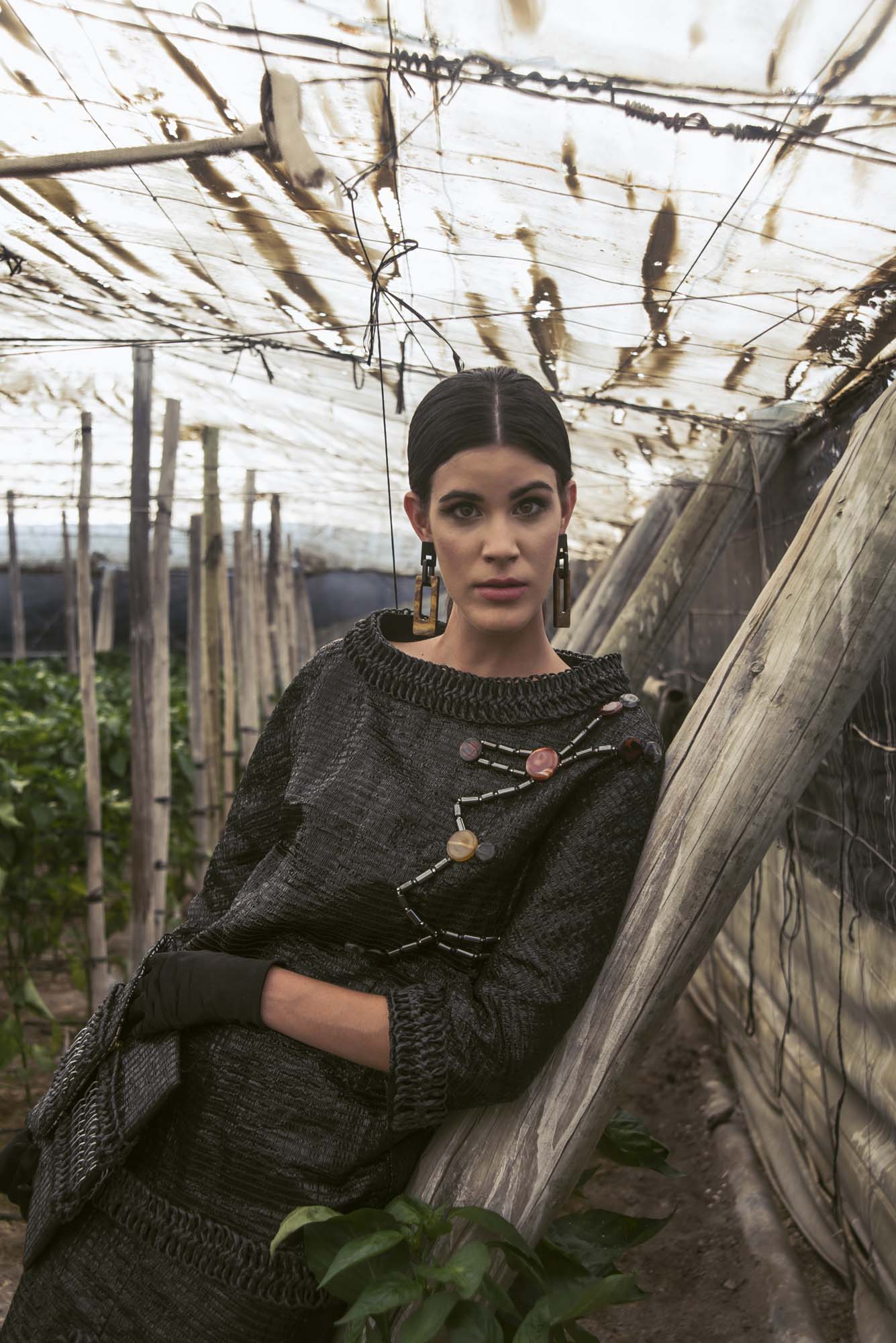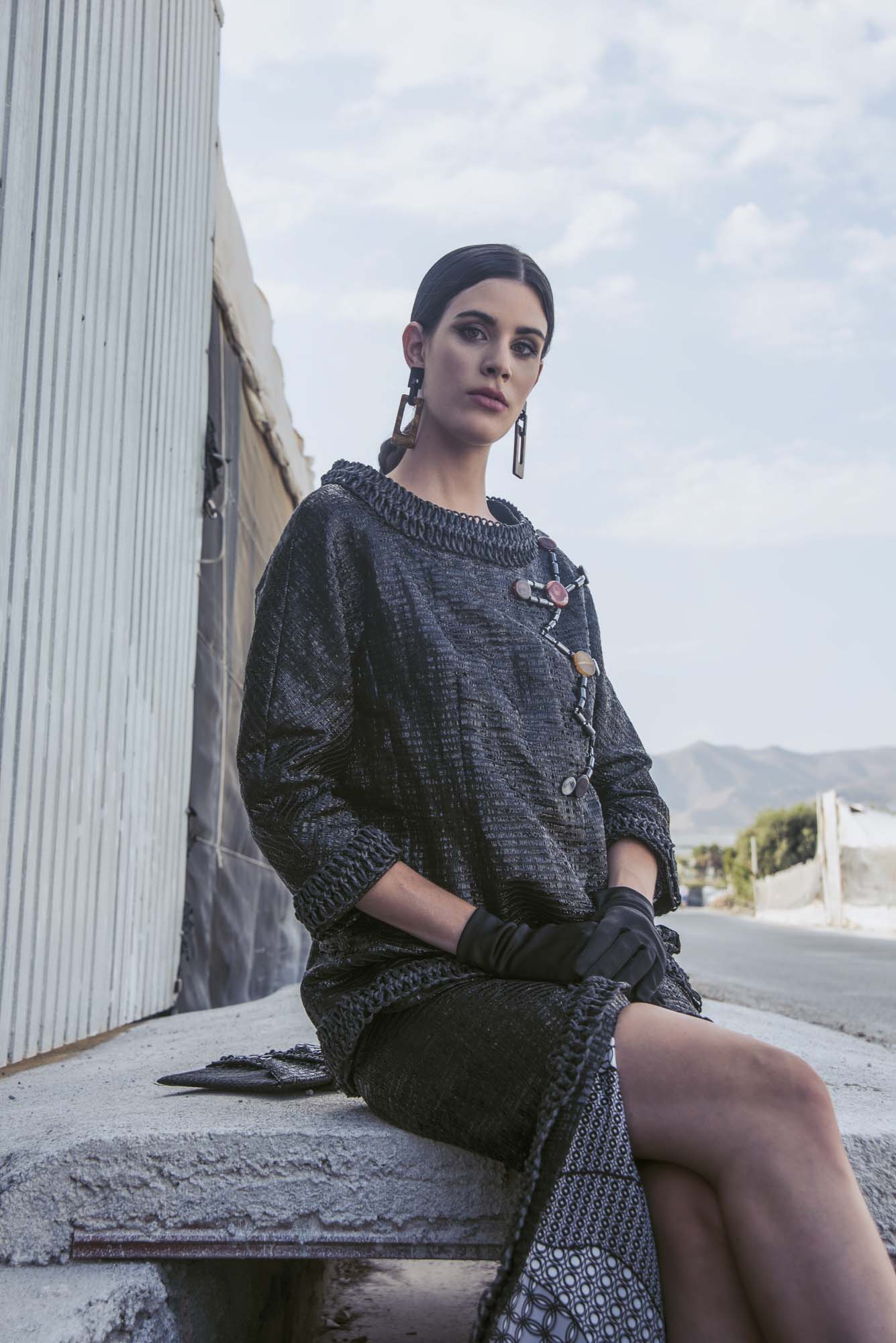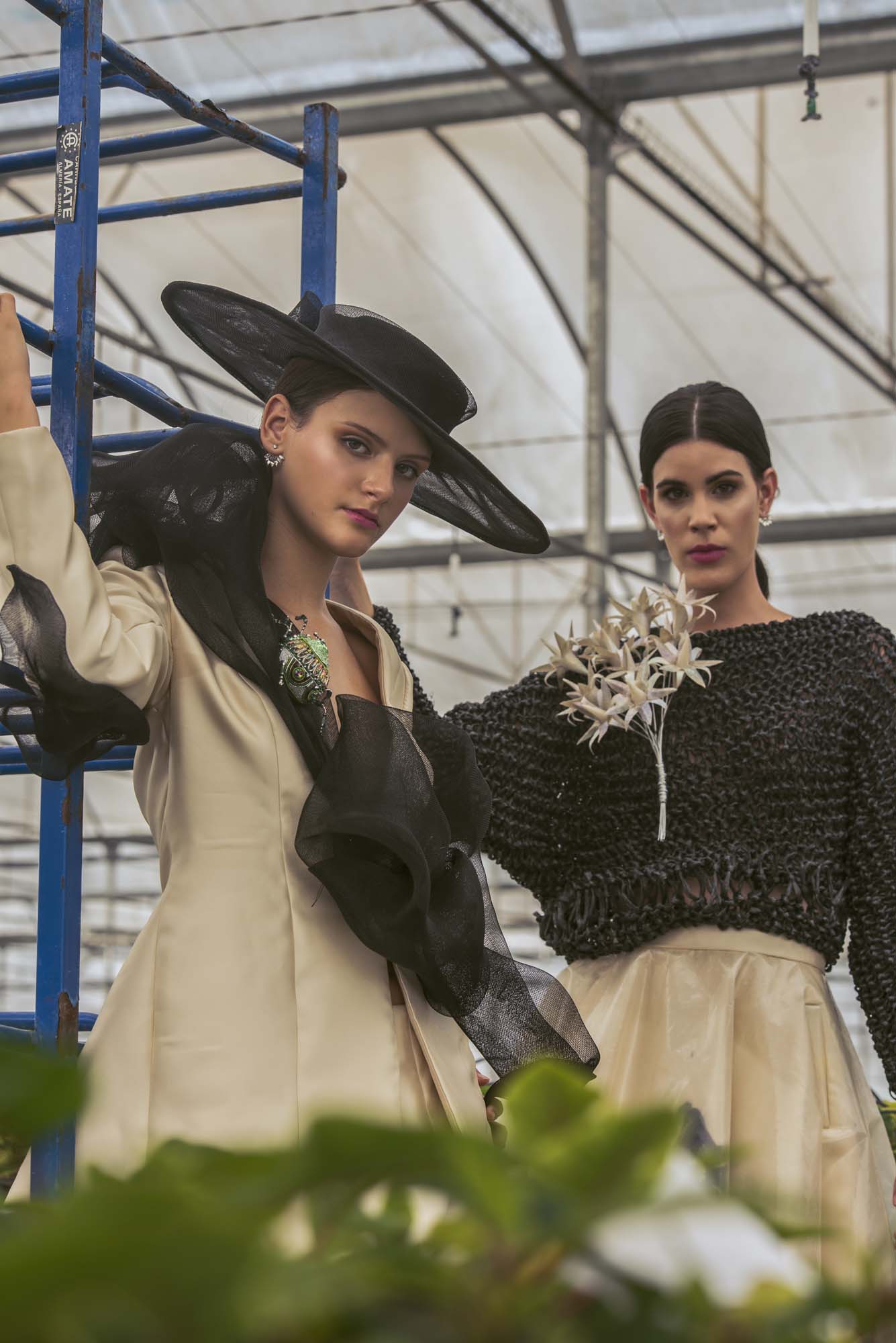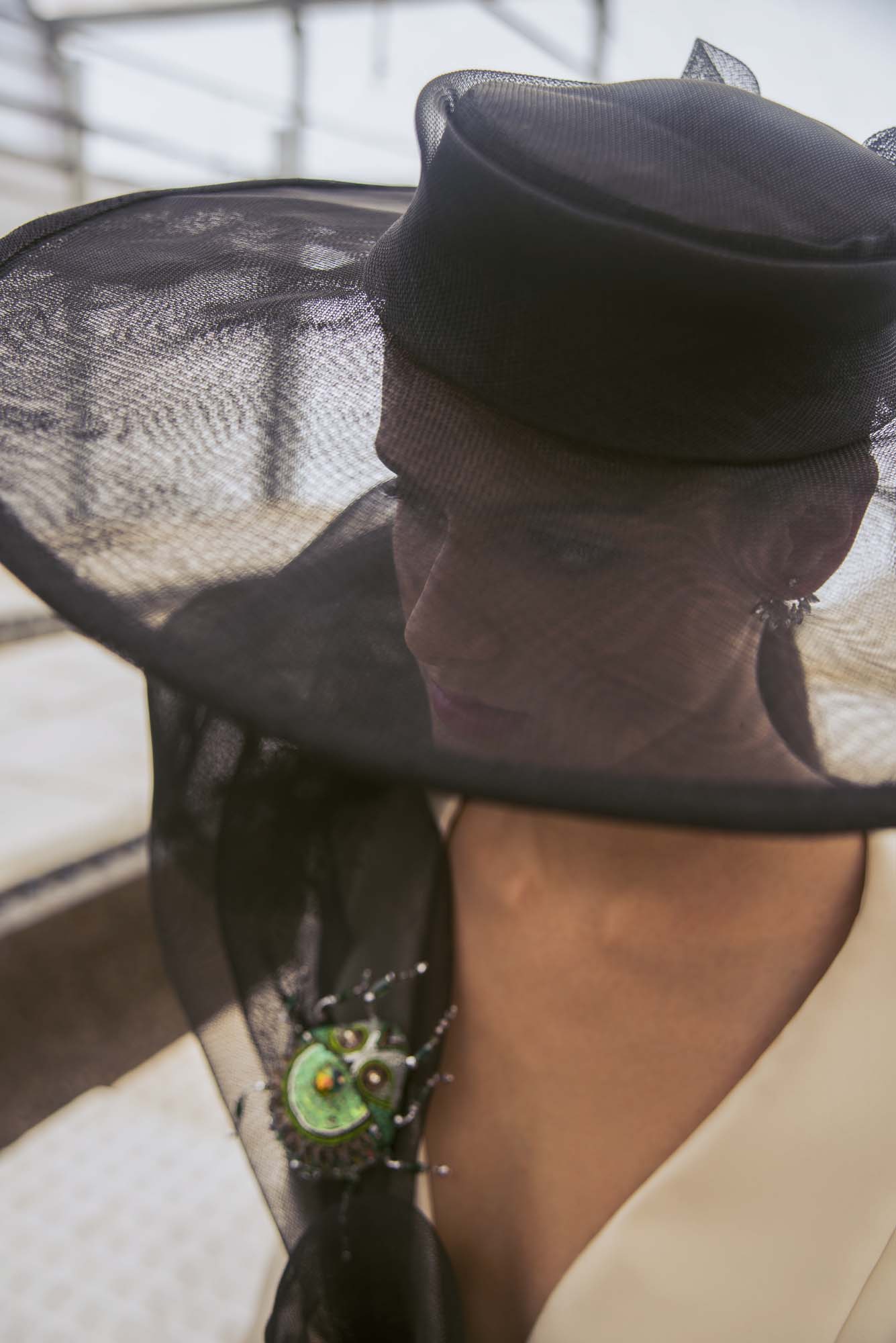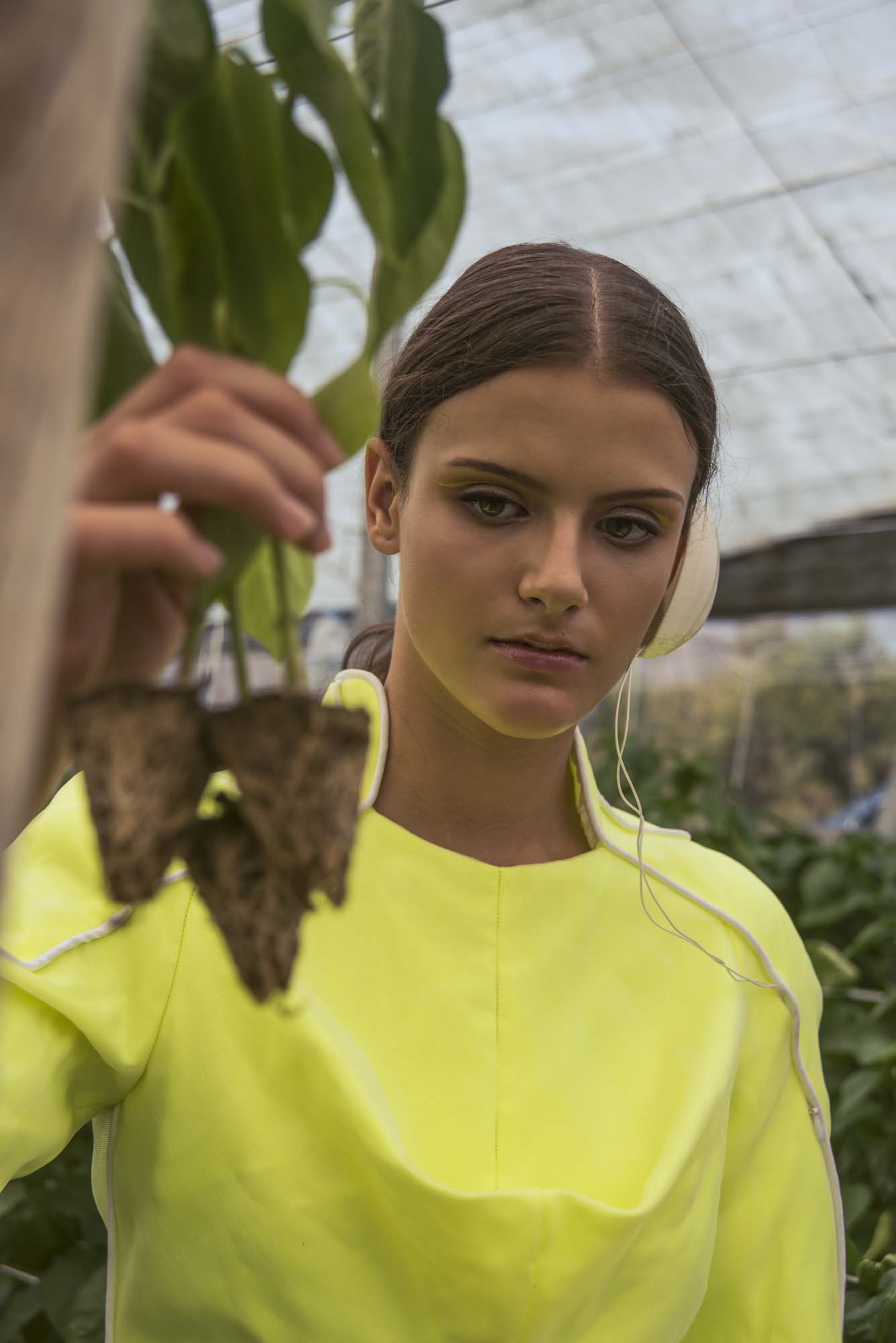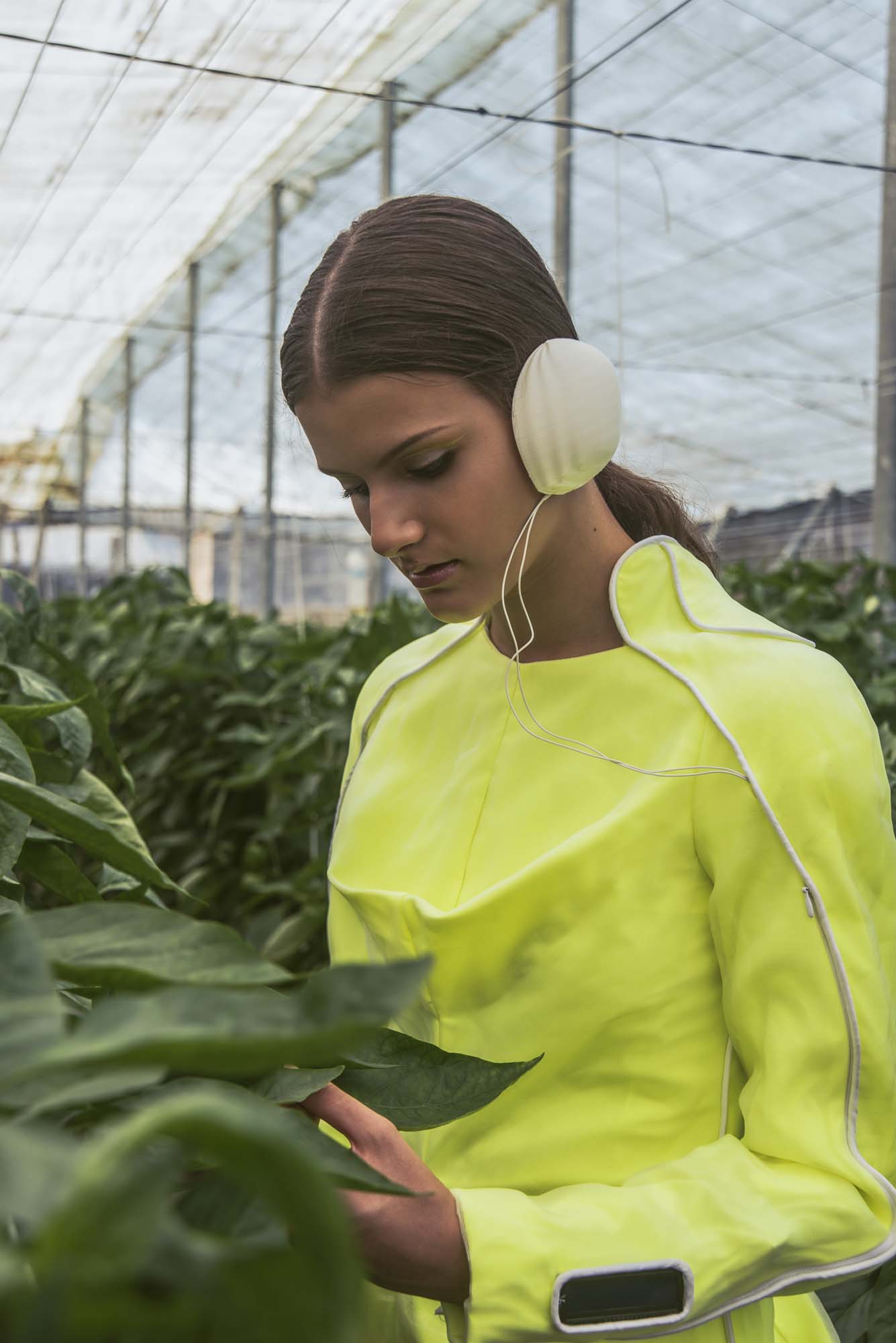Agricostura is a collection of women's haute couture fashion that, through the artistic support that fashion itself produces, aims to tell the story that has happened in the Almeria countryside.
Despite the fact that there is already diverse documentation that collects all the process through which the province has gone through, it is not a story that is too well known. Agricostura intends to give it greater scope, in a way that has not been done until now.
Going through its three main phases, designs will be produced that speak of the past, present and possible future of the fruit and vegetable sector. The collection is inspired by science, progress, culture and sustainability.
We are located in the Almeria countryside, the main agri-food power that supplies basic products to all of Europe and some parts of the rest of the world. Healthy foods are grown here, which have fiber, vitamins and antioxidants, and feed more than 500 million Europeans throughout the year. In addition, the model of cultivation under plastic, developed mainly in Almeria, is the most repeated in the five continents because it has proven to be the most successful, with a share of 95%. It is also sustainable and environmentally friendly.
The model of cultivation under plastic that prevails right now in the west and east of Almeria is called "Integrated Control". This system seeks to integrate pest control using insects that prey on pests, instead of the previously existing phytosanitary products, while respecting the natural balance of the ecosystem that is generated inside the greenhouse. In this way, crops are grown in an environmentally friendly way, the soil does not suffer wear and tear and can be regenerated for later use, and agricultural technicians are no longer exposed to hazardous substances (as was the case in the past). The main agents of change were the two insects Amblyseius Swirskii and Orius Laevigatus, which attacked the pressing thrips plague.
On the other hand, there is one problem that is difficult to tackle: plastic. Greenhouses renew their external enclosure every season (approximately every three years), and this enclosure is made of plastic. Due to its nature, and the geographical context in which we find ourselves, this plastic is eventually consumed by the sun, losing its gauges (measure of elasticity and durability), so it is necessary to change it.
When this plastic is discarded, it is left on the ground, and a specialized transport takes it to a recycling plant. However, in Almeria the winds are always strong, and part of this plastic ends up flying away, becoming litter and integrating into the strata of the ground or even into the sea. It is well known that plastic has a very bad degradation, almost non-existent. Some of these plastics are: roofing, shading netting, raffia threads, mulching and disinfection films...
When plastic is purchased to make a new exterior enclosure, it is bought in rolls, which come in pre-established widths. It is possible that some of the total meters they contain are not used, remaining stored and unused. It could be said that they are pre-consumer leftovers that would only serve for small repairs, but that could no longer be used for a complete enclosure; for the following season it is necessary to buy a whole new quantity because the enclosure must be continuous, in order to maintain optimal conditions of interior temperature and humidity. The Agricostura collection recovers part of these materials and uses them by combining them with fabrics in a completely handmade way.
For all of the above, the history of cultivation under plastic and the whole system that has been able to develop in silence, is a story worth telling. The means to make it visible will be through a fashion collection consisting of three phases: past, present and future of cultivation under plastic, making a personal commitment to transgenics and gene editing tools CRISPR / Cas
Likewise, we use elements of this industry recontextualized in fashion design, such as the aforementioned post-consumer waste or the transformation of waste plastic into a valuable product. Impressing a narrative to the project, shapes and silhouettes will be developed that describe and personify the essence of the progress that this land has experienced, seeking excellence in the finishes and cleanliness of Haute Couture.
For all these reasons, the collection is called Agricostura.

